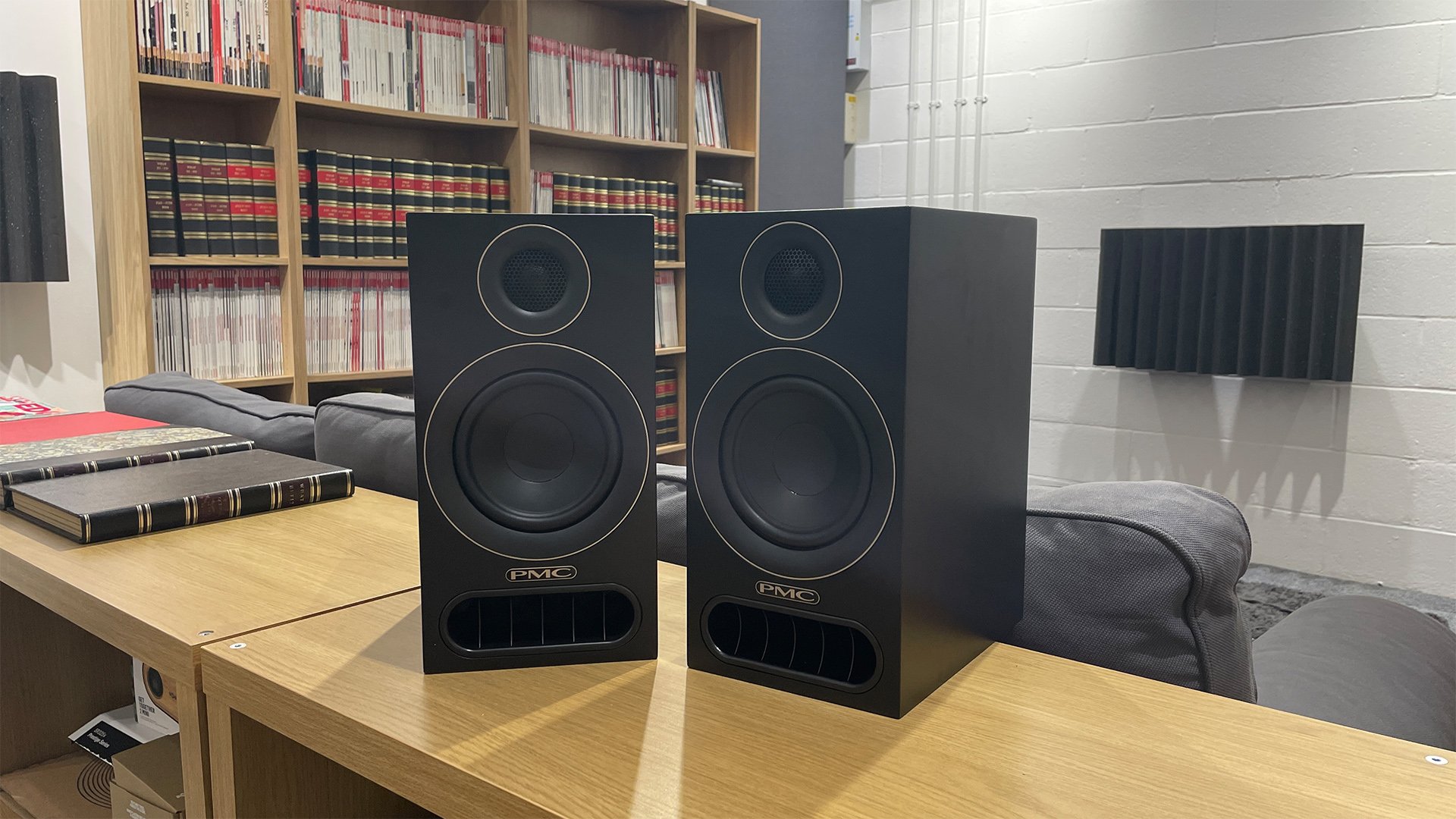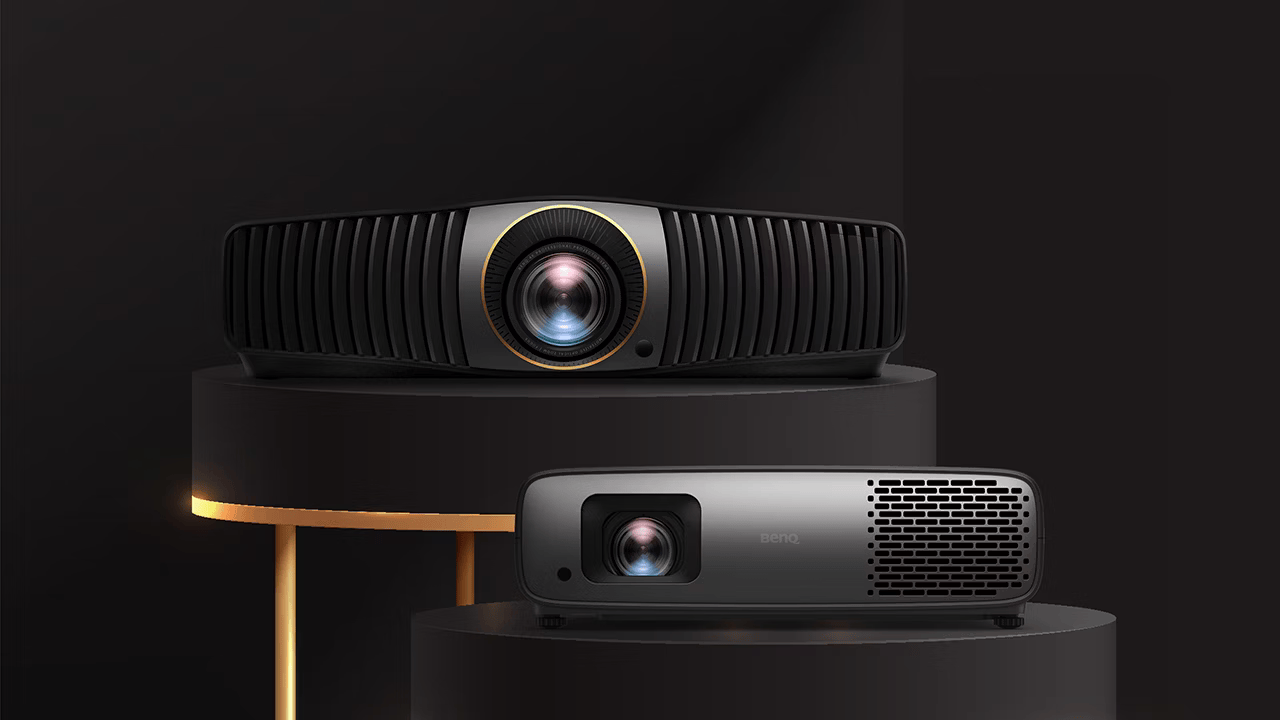What Hi-Fi? Verdict
Living up to their name, PMC’s new entry-level standmounts sound nothing short of superb for their modest size and price
Pros
- +
Hugely impressive clarity and resolution
- +
Precise and organised
- +
Decent bass depth and punch
Cons
- -
Relatively low perceived value
Why you can trust What Hi-Fi?
As much as we admire PMC’s Twenty5 series, there’s no denying they stood as a relatively high entry point into the company’s speakers. So when the British brand revealed a new entry-level range with a starting price nearly half that of the previous most affordable PMC model (the Twenty5 21i), somewhat ironically during the High End Munich show earlier this year, we were a) delighted, and b) intrigued to see how it would fare against the established competition around this very popular and competitive price point. We’re talking long-proven models from your KEFs and Bowers & Wilkins, Dalis and Wharfedales and so on. Well, just a few months later, the time has come to find out.
The PMC Prodigy 1 standmounters we have here make up a two-strong range alongside the Prodigy 5 floorstanders, together opening up PMC speakers to a wider audience looking for compact loudspeakers for small-to-medium-sized rooms below the £2000 / $2000 / AU$4000 mark. But just because the Prodigy speakers sit at the bottom of the company’s lineup doesn’t mean they’re exempt from PMC’s tried-and-tested technologies. According to the firm, they are even measured and listened to alongside reference models, and furthermore signed off by their assembler before they're boxed up and ready for shipping. It certainly seems like PMC is serious in taking its studio-grade sound mainstream.
Design
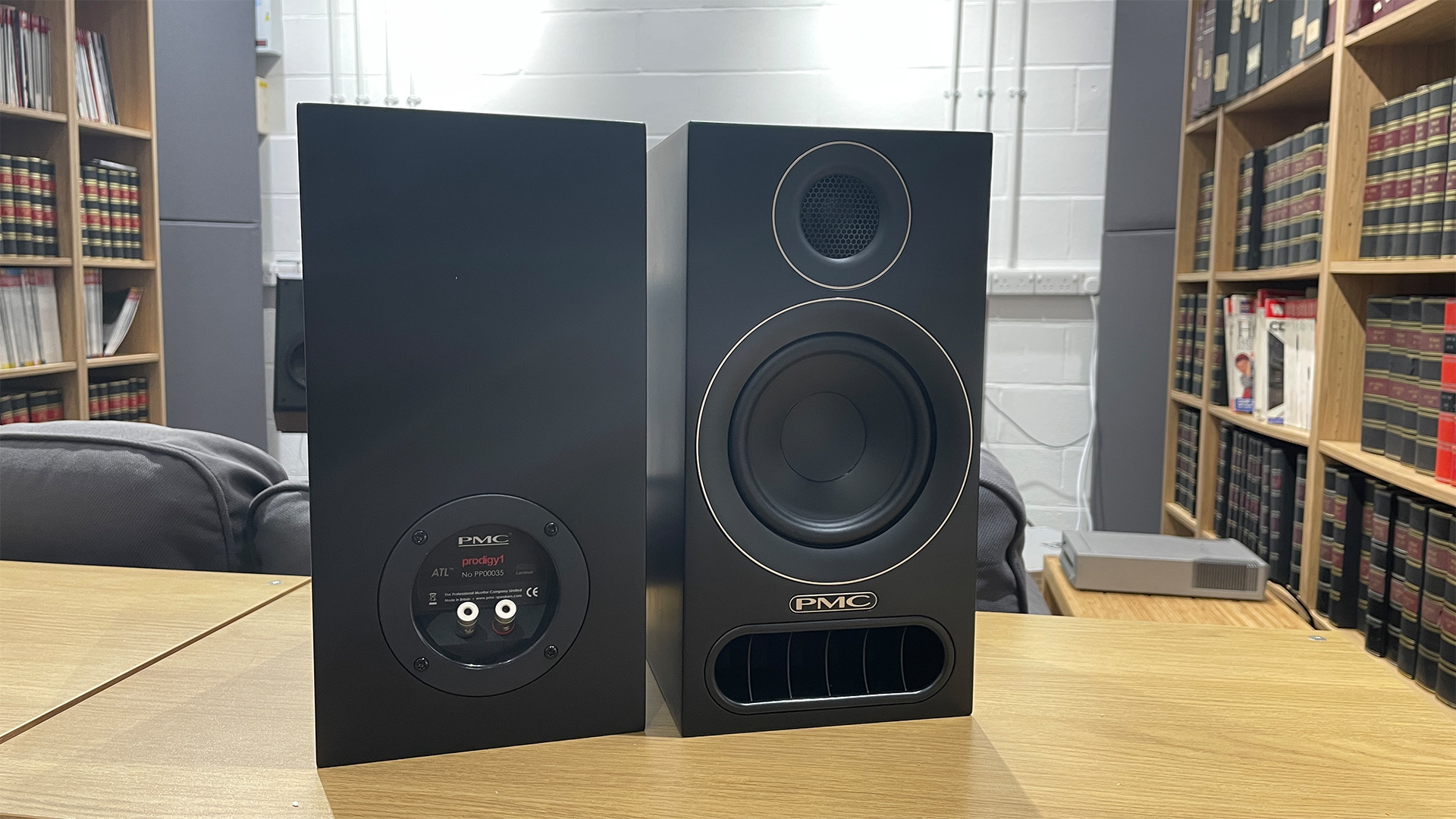
The two-way standmounts’ 27mm soft dome tweeter and 13cm mid/bass driver have both been taken from models further up the company’s line. The soft-dome tweeter has been developed from the one found in the five-star PMC Result6 studio monitors, while the natural-fibre, dished-cone mid/bass unit is the same featured in the company’s ci (custom install) series, which PMC says has become the reference for Dolby Atmos music mixing in studios around the world.
That driver has been designed specifically to couple with PMC’s signature ATL (Advanced Transmission Line) bass-loading method used in all PMC speakers. This essentially guides the backward energy of the mid/bass driver through damped material inside the speaker and out of the front port. Most of the low frequencies are absorbed, save for a lowest-end portion that leaves the front port and contributes to the driver’s output for more powerful bass. The ATL also works to keep air pressure inside the cabinet consistent to improve control of the driver.
That distinct-looking, aerodynamically designed port at the end of that internal line is called Laminair, which was first developed for the flagship QB-1 studio monitors and is designed to smooth the passage of air exiting the speaker to minimise airflow noise and consequently improve bass definition. Last but not least on the engineering front, PMC has chosen a crossover point of 1.7kHz in a bid to ensure that the speakers’ off-axis output has the same tonality as their on-axis output.
Build
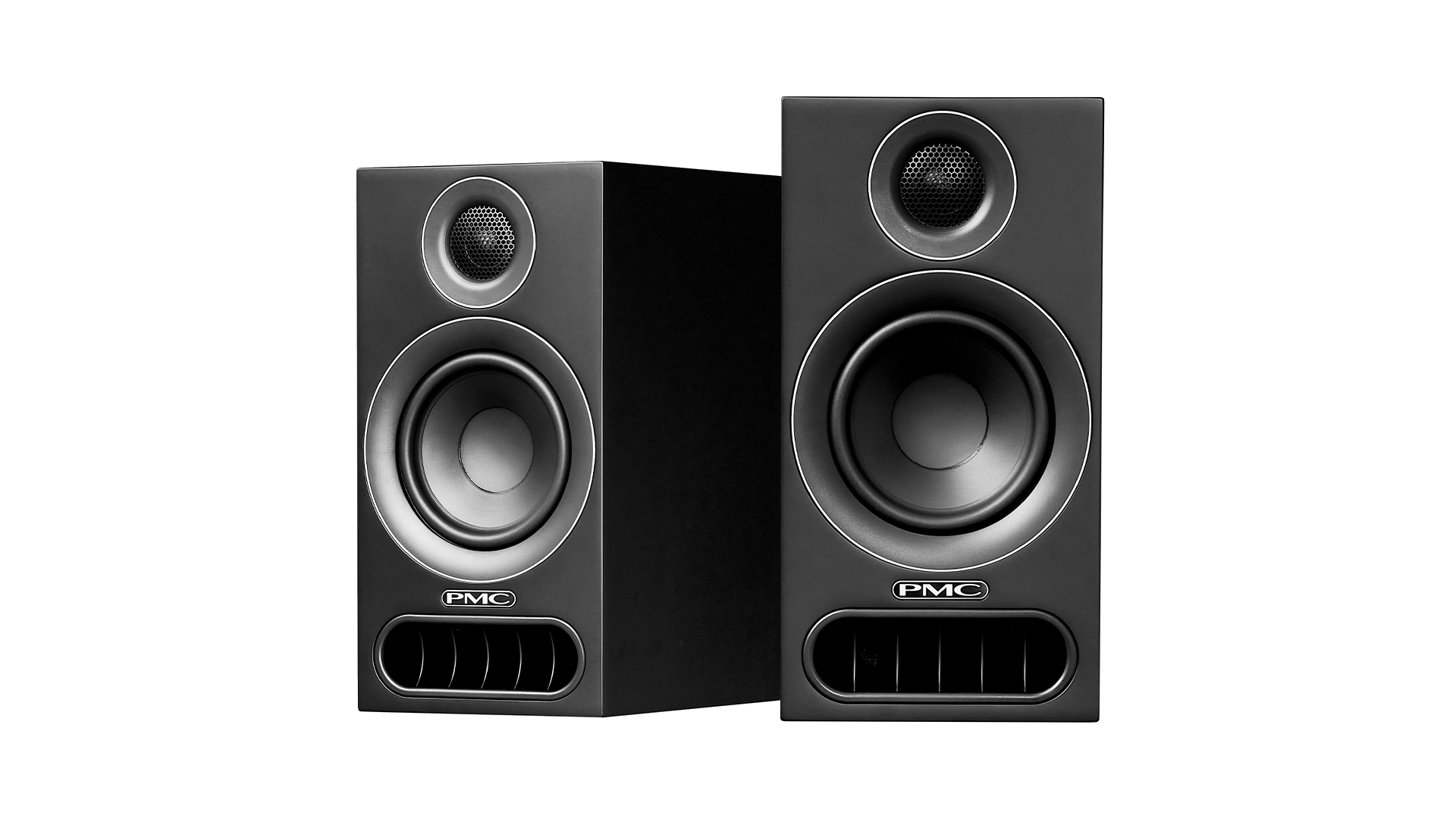
Again, despite their relative affordability, the Prodigy speakers share the same manufacturing treatment as their pricier peers, being designed and built in-house in Luton, UK. As mid-priced bookshelf speakers go, the Prodigy 1 are of the taller, slimmer nature, their profile making them the Stan Laurel on our test room’s stagefloor when stood next to their closest rival, the shorter, wider – the Oliver Hardy – KEF LS50 Meta.
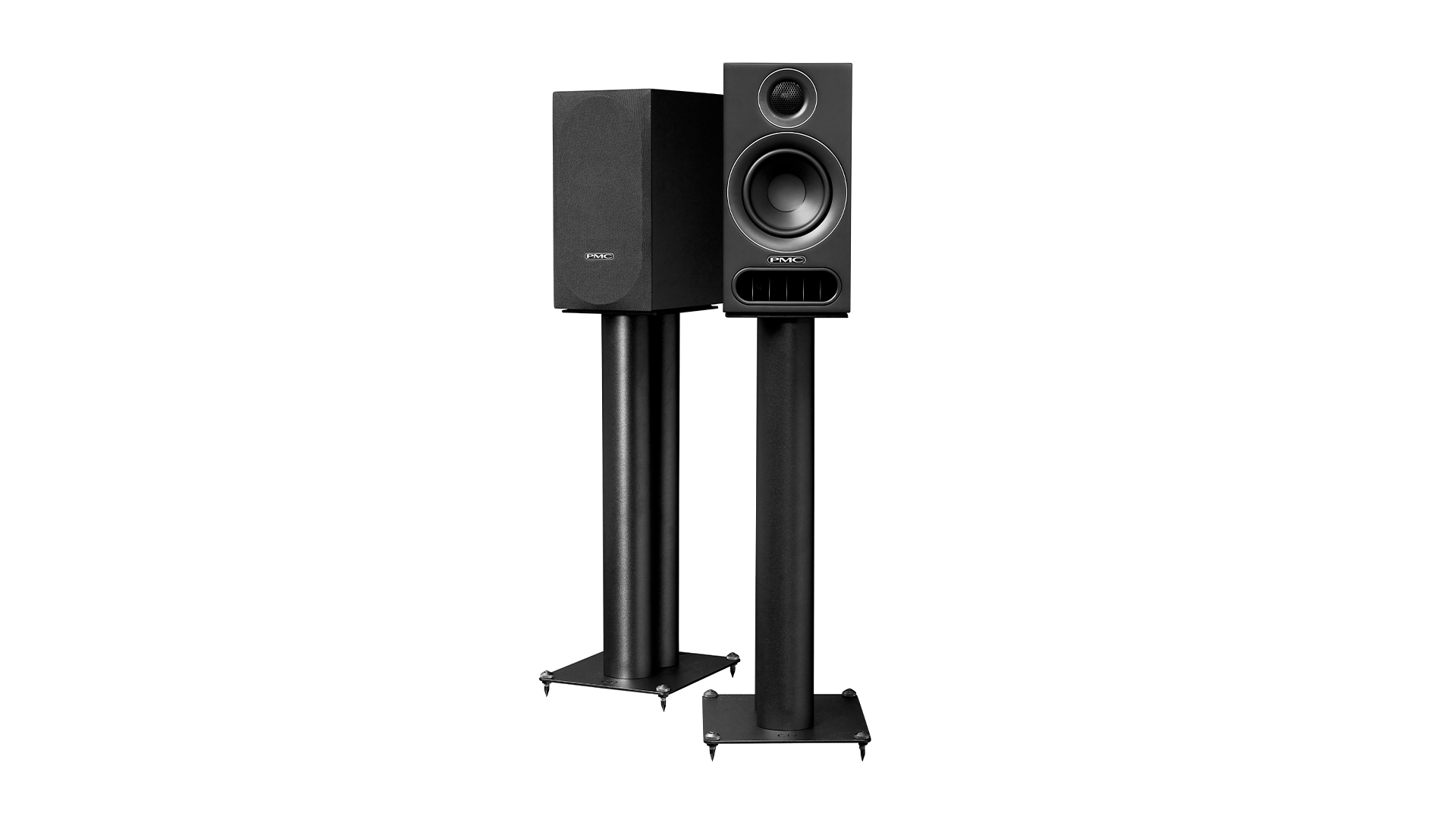
Type Standmounts
Drive units 27mm tweeter; 13cm mid/bass
Ported? Yes (front)
Bi-wire? No
Impedance 6 ohms
Sensitivity 87.5dB
Dimensions (hwd) 32cm x 16.2cm x 23.7cm
Weight 4.5kg each
Finishes x1 (silk black)
It’s in the design department where PMC likely chose to cut costs, the Prodigy 1 notably less striking and stylish than not only the KEFs but a number of pairs around and below this price point – Bowers & Wilkins’ 606 S3 and Sonus Faber Lumina 1, to name just two. The ATL/Laminair implementation gives these otherwise ‘Plain Janes’ one point of visual interest at least, and the ‘Silk Black’ matte finish looks and feels nice enough (though don’t feel it too much; it’s a magnet for finger-mark spoiling). Ultimately, the aesthetic will appease those from the school of minimalist design, it just isn’t likely to stand out in a living space any more than a transparent flower vase.
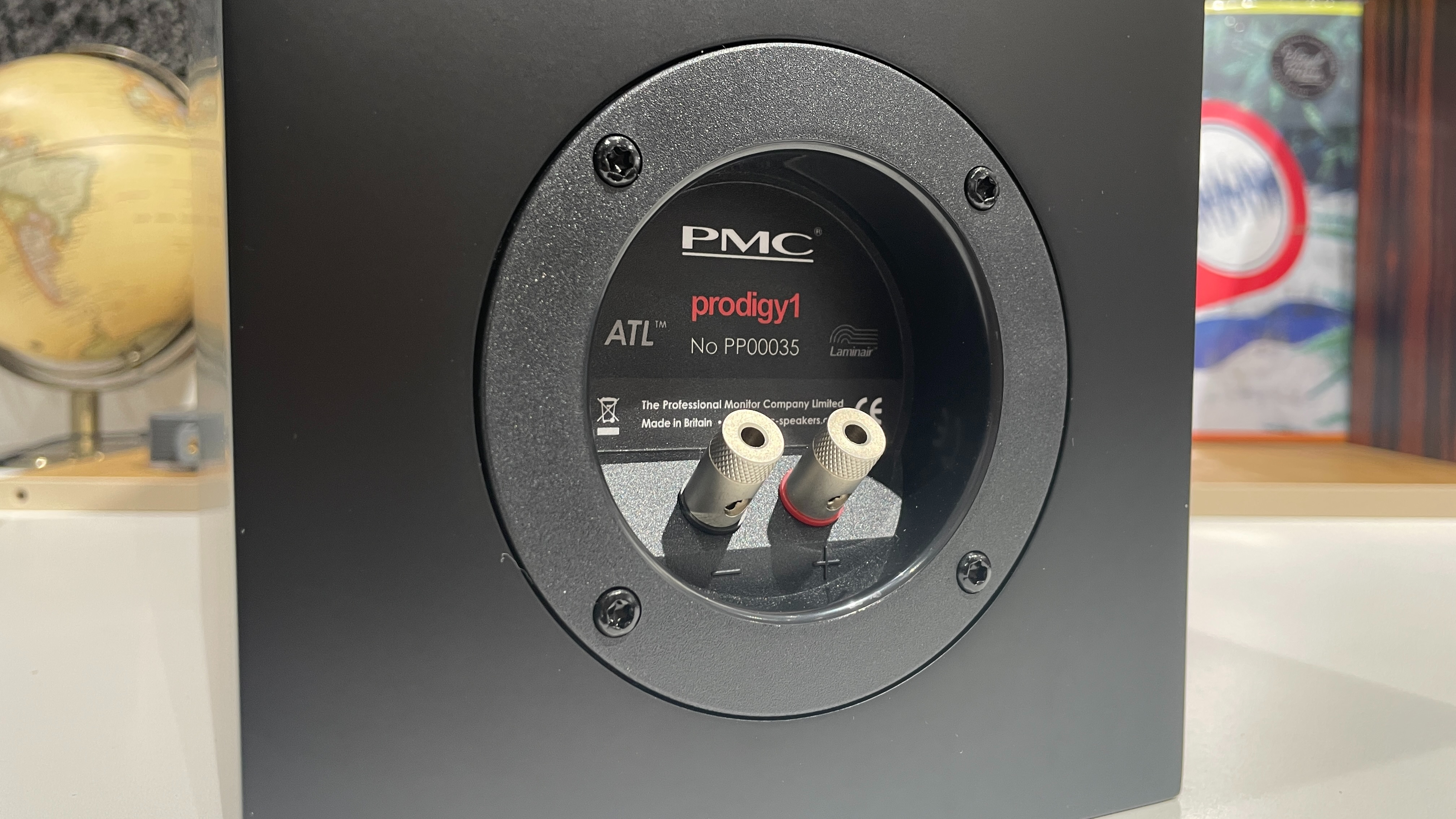
Some readers might be a bit bummed to read that the black fabric grilles are an optional extra costing £99 / $139 / AU$189 for a pair, too, though PMC would argue that a good proportion of buyers probably wouldn’t use them anyway, and why push a price point up for something not everyone wants or needs?
That the focus and cost has seemingly been put into the engineering for the most part is hard to argue with when you hear just how spectacular the Prodigy 1 sound. We have heard enough PMC products over the years that certain adjectives spring to mind when we think of them: precise, articulate, insightful and even-handed. All good things. And we’re pleased, if not surprised, to report that these are all attributes of the Prodigy 1.
Sound
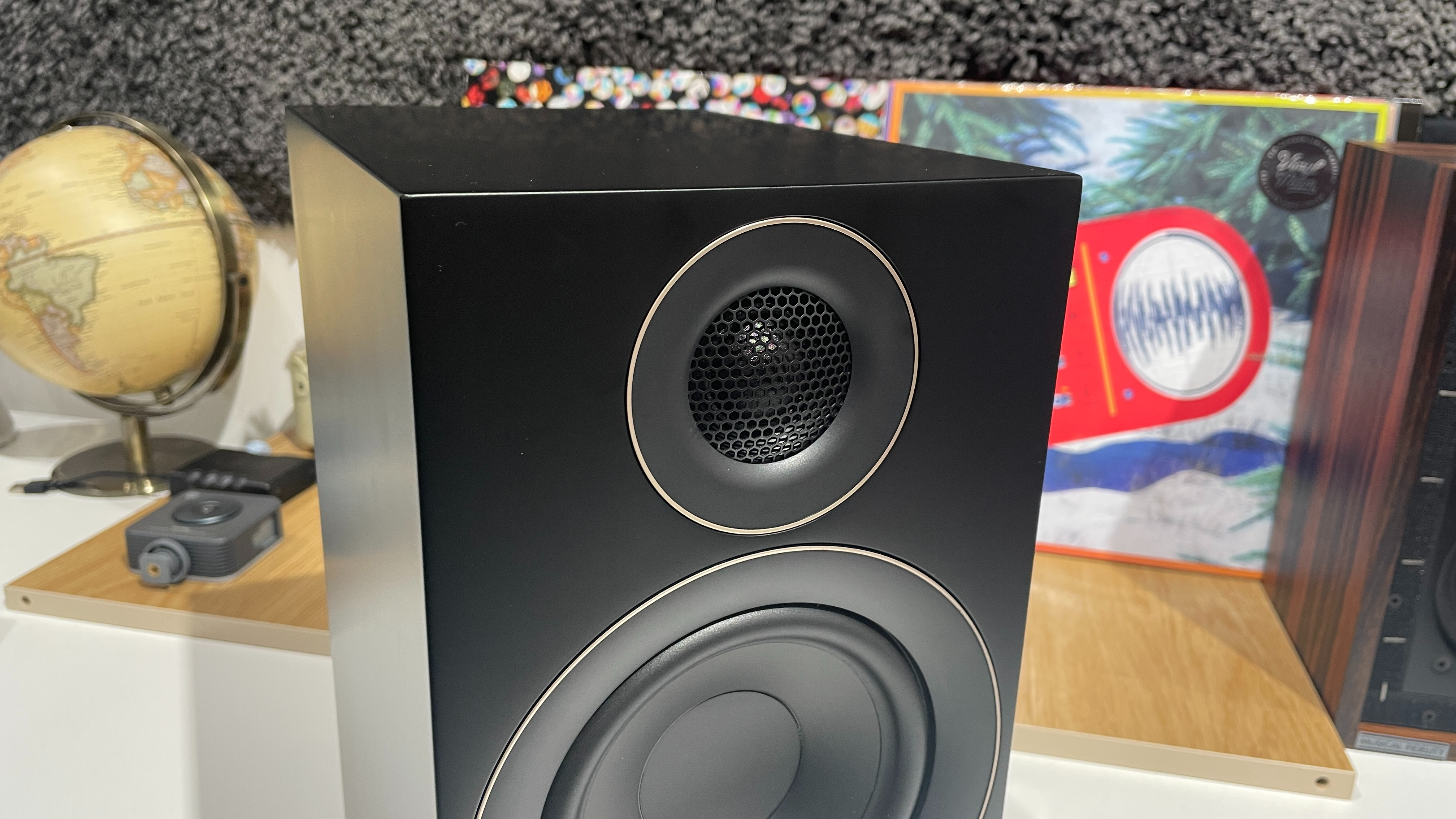
No bookshelf speaker can operate optimally without proper support, so we first pop the Prodigy 1 on trusty stands and toy with positioning, ultimately finding the best tonality and balance of authority and stereo imaging is achieved when the speakers are only slightly toed-in and placed a little closer to the wall than our default position – no more than half a metre away. Hooked up initially to our primary high-end reference system, the Prodigy 1 have the floor.
Some of the best kit we review impresses us from the get-go, and wraps up its star rating in a matter of minutes while the true sonic colours of others require longer listens to fully appreciate. These PMCs are examples of the former, showboating their stunning clarity, detail and entertaining charisma during our first parade through Orville Peck’s Dead Of Night. It’s a doozy of a country-cum-shoegazy track from the mask-wearing cowboy, and the Prodigy 1 have the scale, transparency and authority to embrace its brooding theatrics. The lap steel guitars pang robustly through the soundstage without overshadowing the shakers layered clearly beneath them, while an impressive dynamic expression and solidity in the midrange combine to get right under his crooning baritone.
It does more than hint at an all-round level of sonic sophistication typically associated with speakers beyond this price, and that is only confirmed as our listening continues. Play Anohni And The Johnsons’ It’s My Fault from the collective’s latest album, and the Prodigy’s midrange talents come to the fore once more. There’s substance behind her vocal delivery, and a very honest rawness that conveys her grief and guilt around her complicitness with how humanity has “broke the earth”. Emotion pours out of her mouth and the PMCs do well to communicate it.
And the bass – wow, the bass. For speakers of their stature and price, we are pleasantly surprised to hear them dig deep enough to not only carry the lowest string note in the walking bassline beneath but do so while retaining its definition. Low frequencies have pace and punch to complement that impressive presence and depth, too, with the groove-beat that underpins dancefloor banger Grammar by Floating Points punching out of the woofer with force of will and stop/start precision.
With that low-end agility as well as a great sense of organisation and timeliness, the synths bouncing around the soundstage with purpose and collective rhythm, the rendition is wonderfully lucid. While the Prodigy 1’s precision and organisation warrant the label ‘analytical’, the speakers aren’t informative at the expense of entertainment. Systematic, yes, but not soulless.
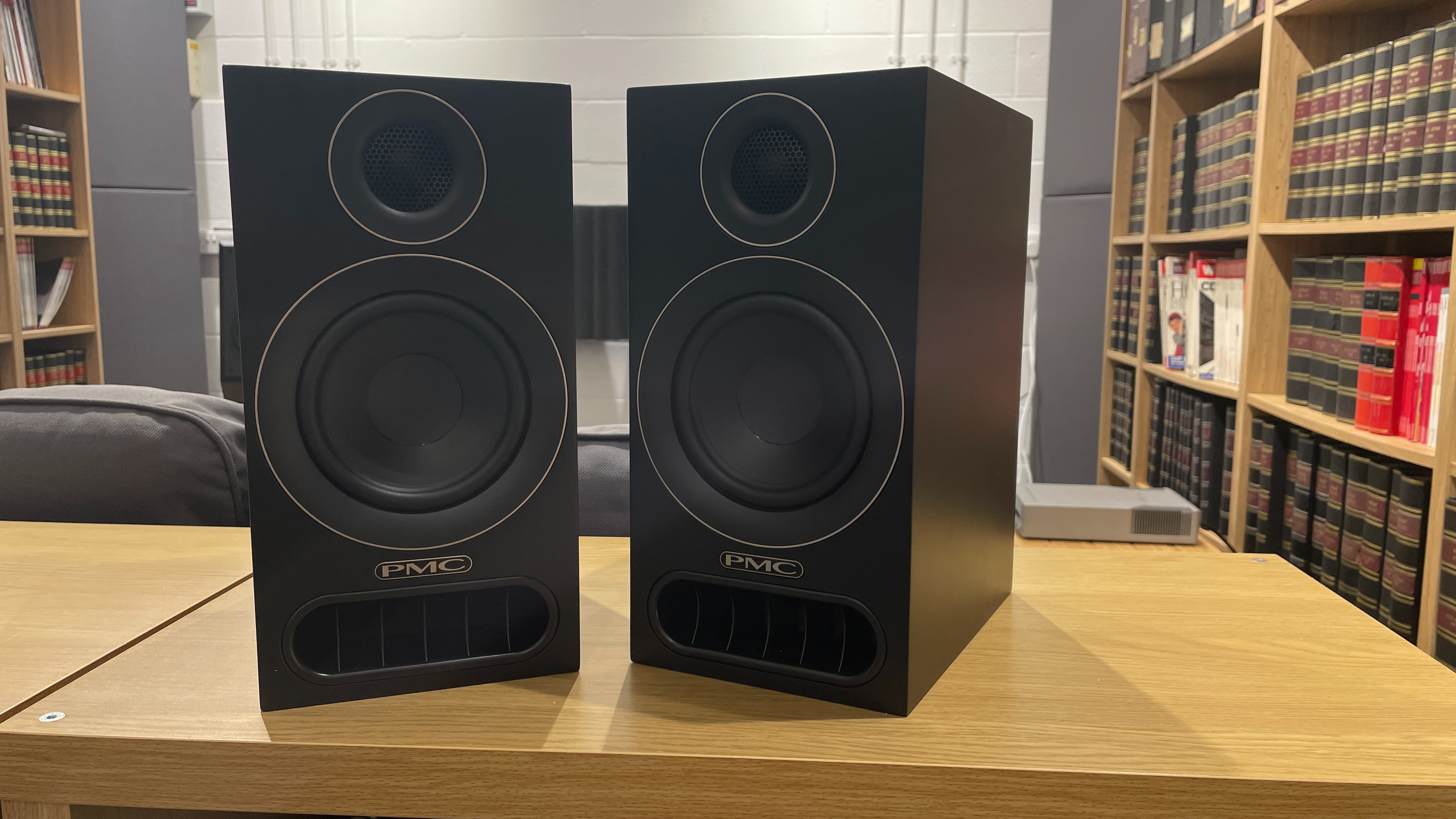
Some may crave a little warmth from the neutral PMCs, so that should be taken into consideration when deciding on partnering equipment. Warmth is certainly something we get from the class-leading KEF LS50 Meta as we swap them in at the helm of our reference system for comparison. There’s a pleasing body and fullness to their sound, not to mention a natural cohesiveness, that makes music sound lovely and free-flowing, but there isn’t quite the PMCs’ clarity or precision, nor quite as much detail, making them feel comparatively a little soft around the edges.
To see how the Prodigys partner with more price-comparable amplification, we connect them first to the Naim Nait XS 3 followed by the Musical Fidelity A1, both tonally warmer amps than the reference Burmester, albeit obviously inferior in overall standard. Happily the PMCs work well with both, the presentation losing in clarity, definition and openness (as you’d expect from such a significant downgrade) but striking a nice balance while remaining dynamically adept. Neither has trouble driving the Prodigy 1, either, which isn’t all that surprising considering their relatively unfussy 87.5dB/W/m sensitivity and 6-ohm nominal impedance. These are speakers that will work with a wide range of amplifiers.
Verdict
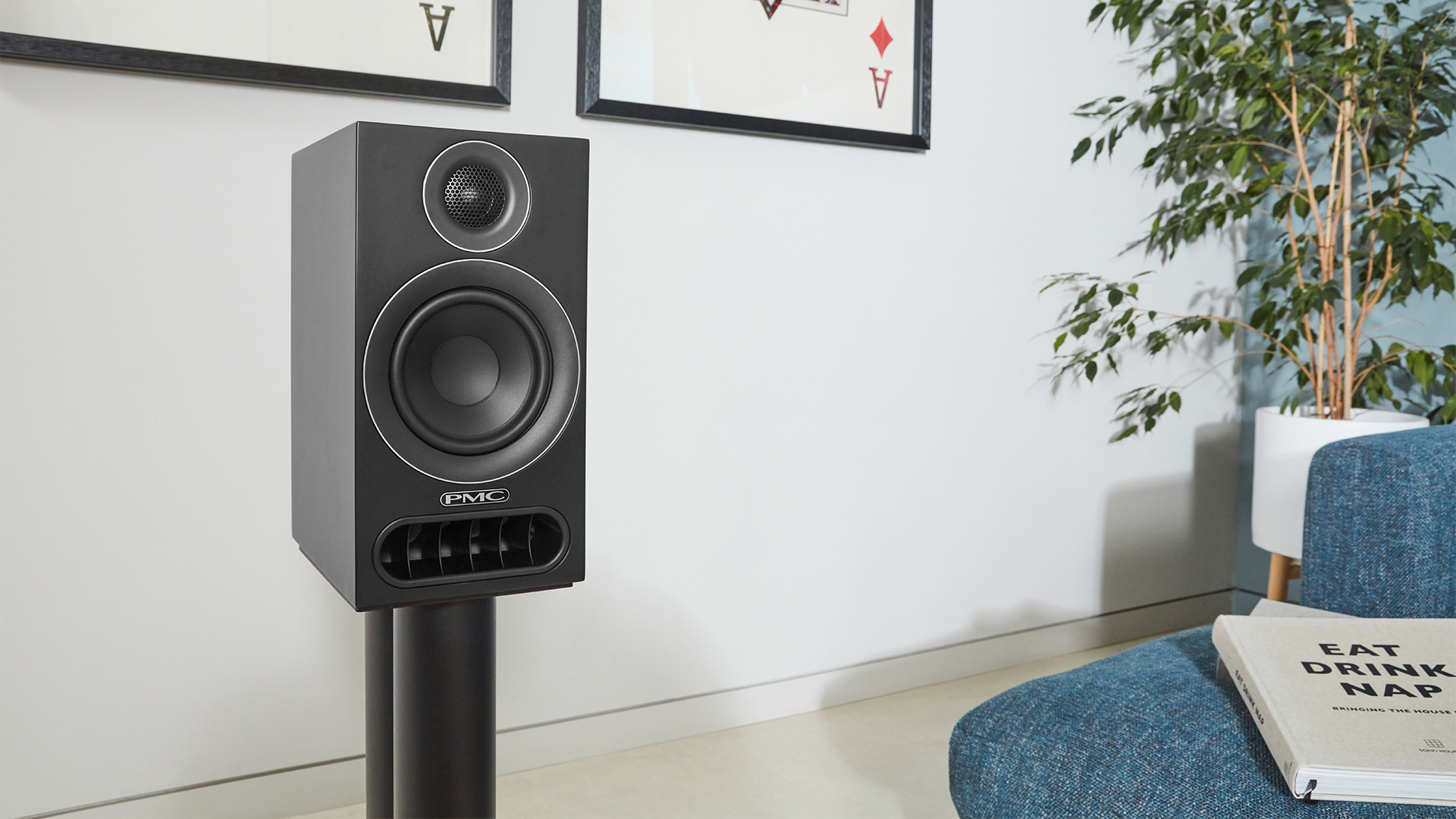
Such versatility and relatively unfussy positioning help make this yet another pair of PMC speakers we can confidently, wholeheartedly recommend, but it’s the speakers' hugely enjoyable performance that first and foremost seals their five-star fate. They sound terrific and no less ‘PMC’ than the company’s pricier models. Indeed the Prodigy 1 simply open up the PMC sound to a wider audience, and any of that audience in the market for new standmounters should waste no time getting a pair into their home.
First reviewed: September 2023. Updated review: November 2024.
SCORES
- Sound 5
- Build 4
- Compatibility 5
MORE:
Read our review of the KEF LS50 Meta
Also consider the Dali Menuet SE
Best speakers: budget to premium stereo speakers
PMC's superb Prodigy 1 illustrate the danger of perceived value
What Hi-Fi?, founded in 1976, is the world's leading independent guide to buying and owning hi-fi and home entertainment products. Our comprehensive tests help you buy the very best for your money, with our advice sections giving you step-by-step information on how to get even more from your music and movies. Everything is tested by our dedicated team of in-house reviewers in our custom-built test rooms in London, Reading and Bath. Our coveted five-star rating and Awards are recognised all over the world as the ultimate seal of approval, so you can buy with absolute confidence.
-
midfi "The two-way standmounts’ 27mm soft dome tweeter and 130cm mid/bass driver". With a 130cm woofer, bass should be fantastic. 😂Reply -
Sliced Bread Reply
It depends what you’re after.midfi said:"The two-way standmounts’ 27mm soft dome tweeter and 130cm mid/bass driver". With a 130cm woofer, bass should be fantastic. 😂
13mm is the same as the kef ls50 which plenty of people are satisfied with, so it’s fine within its size / class.
Plus transmission line is essentially a second in phase driver to give it a little extra extension.
They’re -3dp at 25hz which obviously won’t be at big pressure levels, but still very respectable for a small box with a small driver.
My PMC Twenty5 23i’s have 16mm bass driver plus tweeter and they go far lower in room than my previous b&w’s which had a tweeter, 13mm mid driver and two 13mm bass drivers. The b&w’s countered with more upper bass. In fact my 10inch subwoofer only adds about 3 to 5 hz (measured) extension to the PMC, though of course more pressure.
If you want BIG bass then of course go for big speakers, but each speaker has to be judged within their class / form factor and TL can surprise. -
Deliriumbassist Reply
He was pointing out the original typo of 130cm, which now reads 13cm.Sliced Bread said:It depends what you’re after.
13mm is the same as the kef ls50 which plenty of people are satisfied with, so it’s fine within its size / class.
Plus transmission line is essentially a second in phase driver to give it a little extra extension.
They’re -3dp at 25hz which obviously won’t be at big pressure levels, but still very respectable for a small box with a small driver.
My PMC Twenty5 23i’s have 16mm bass driver plus tweeter and they go far lower in room than my previous b&w’s which had a tweeter, 13mm mid driver and two 13mm bass drivers. The b&w’s countered with more upper bass. In fact my 10inch subwoofer only adds about 3 to 5 hz (measured) extension to the PMC, though of course more pressure.
If you want BIG bass then of course go for big speakers, but each speaker has to be judged within their class / form factor and TL can surprise. -
Sliced Bread Reply
Oh sorry my mistake.Deliriumbassist said:He was pointing out the original typo of 130cm, which now reads 13cm.
